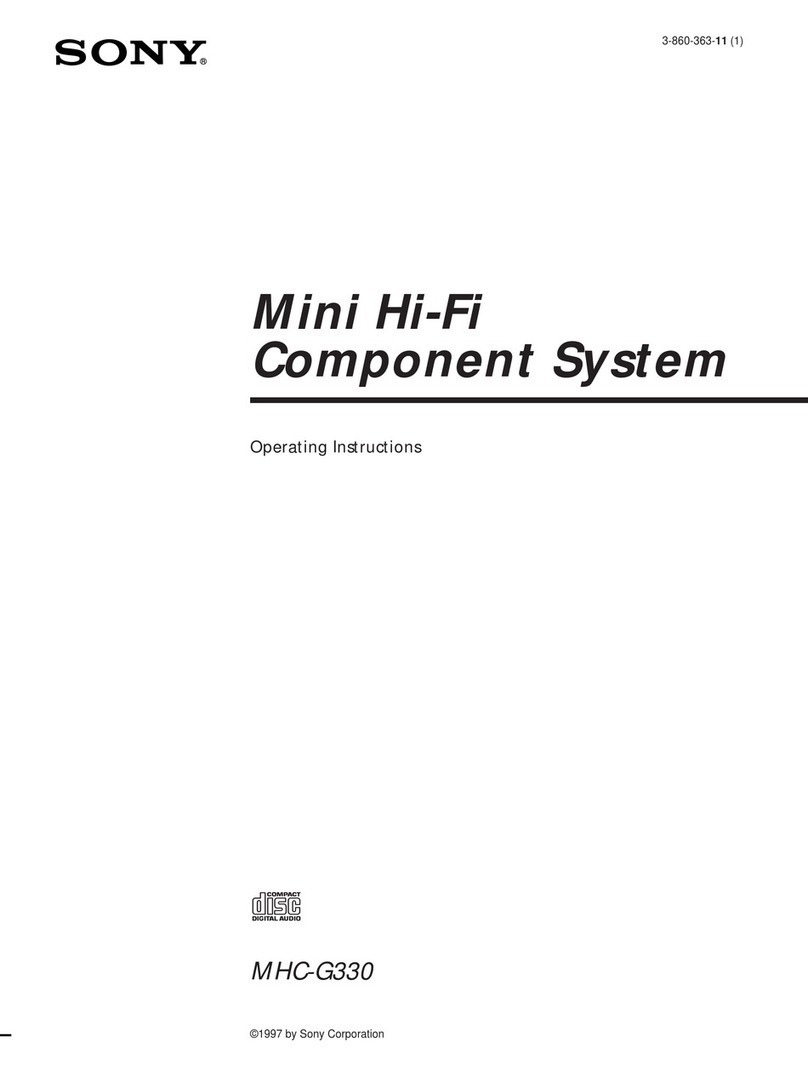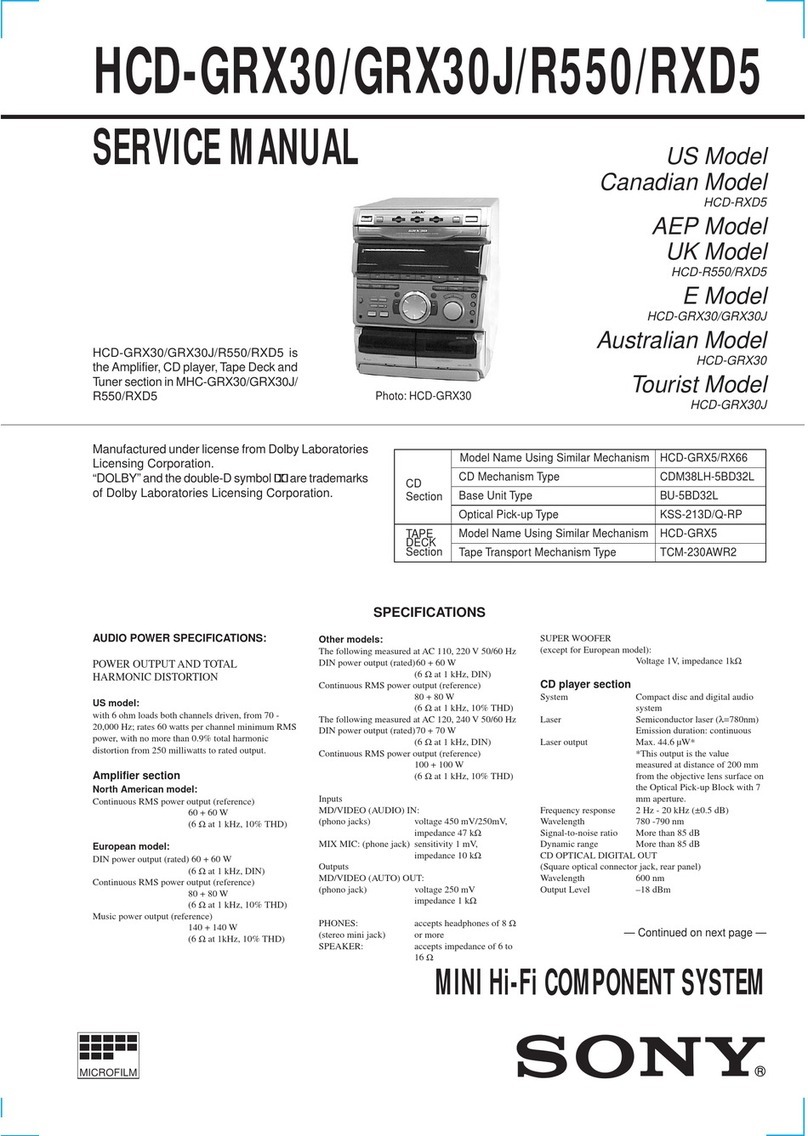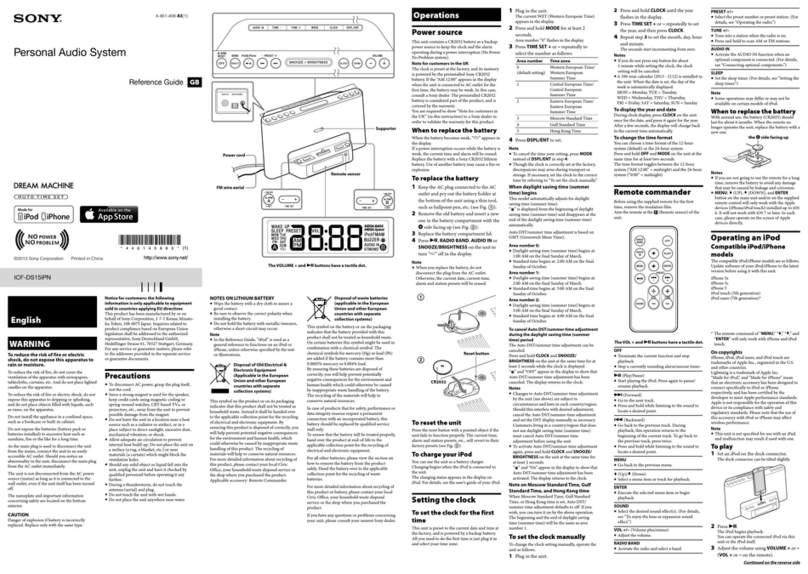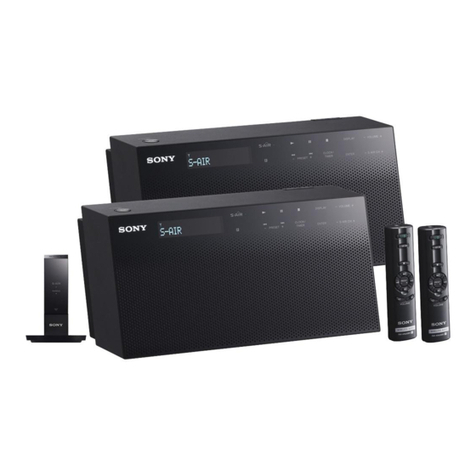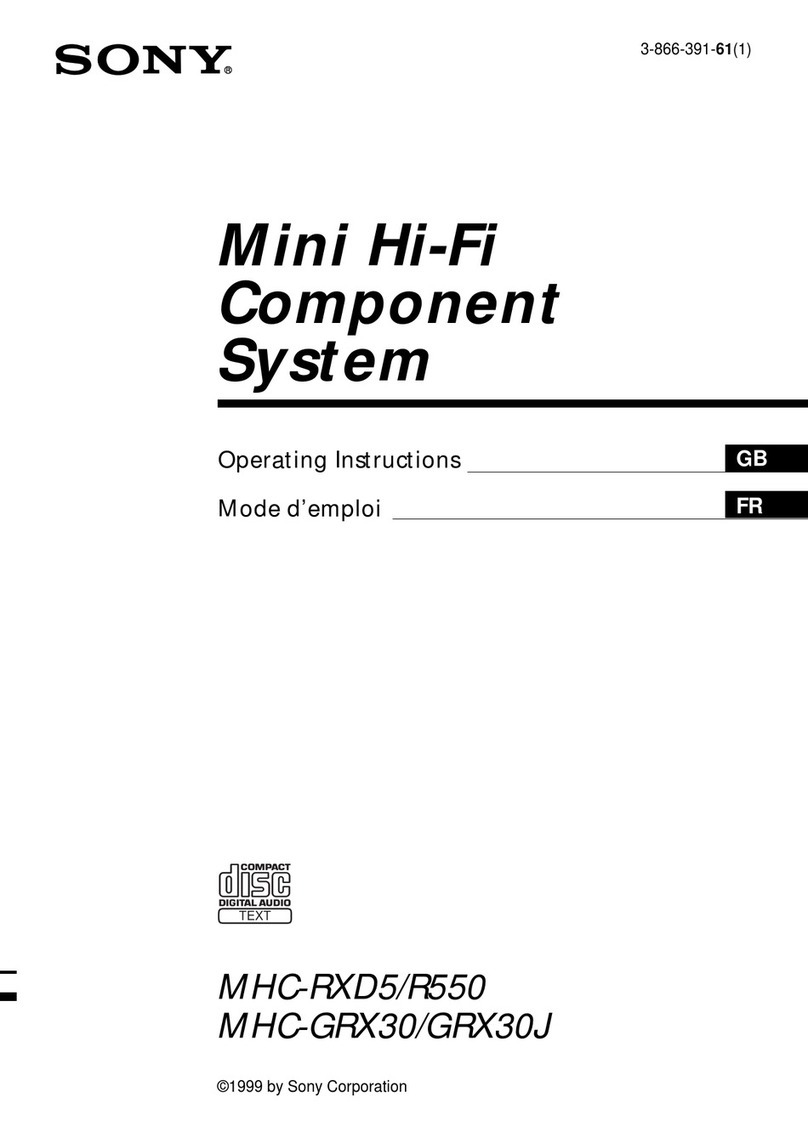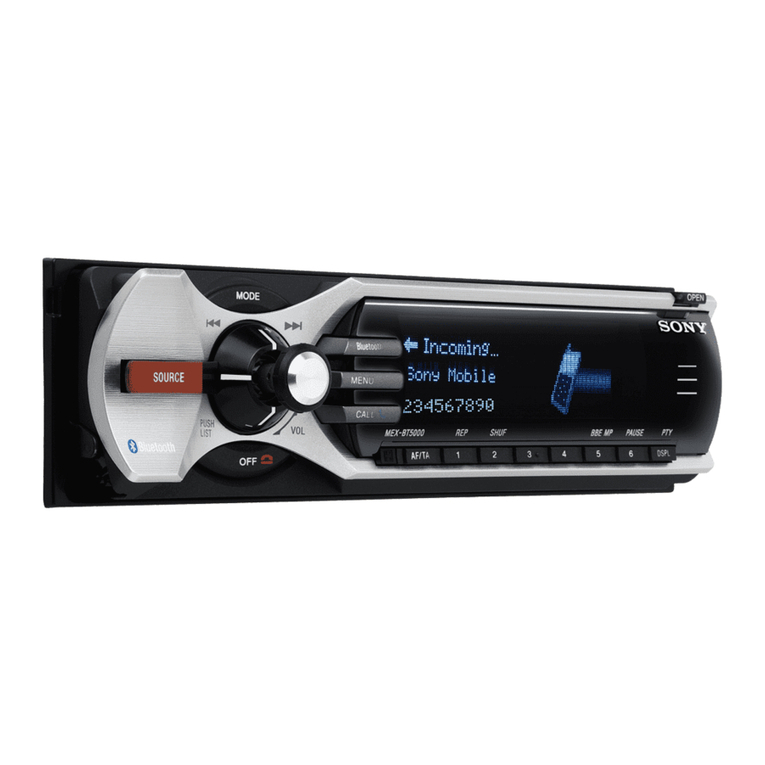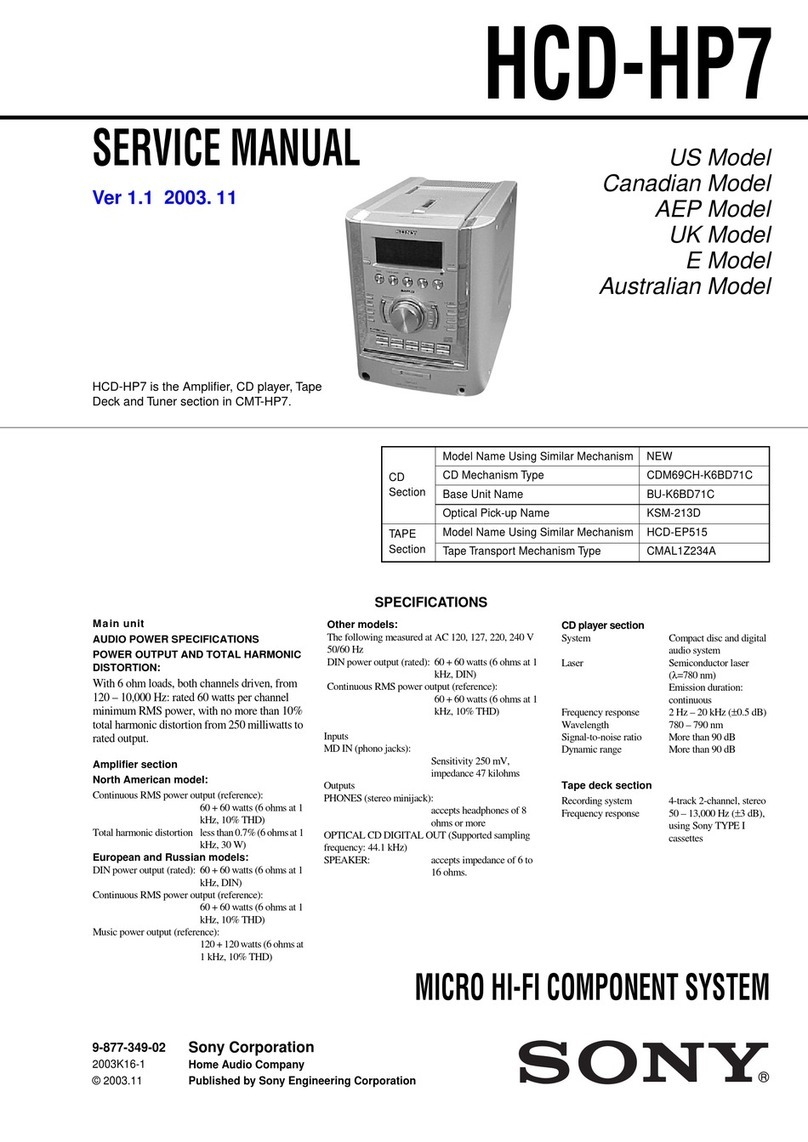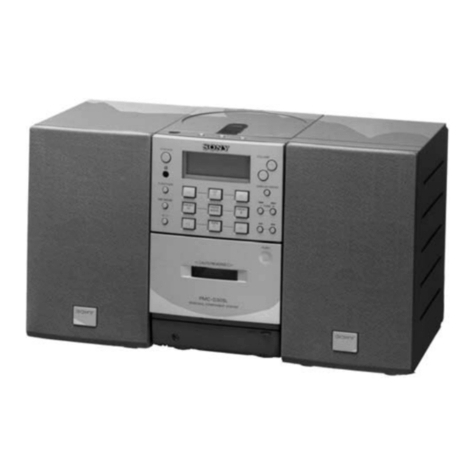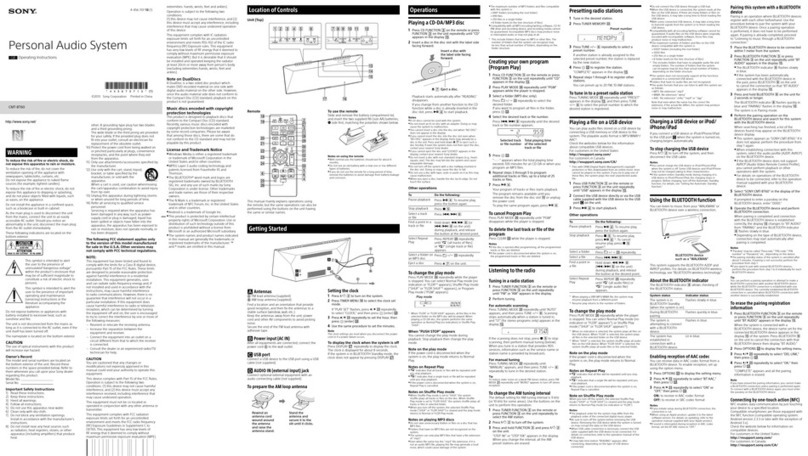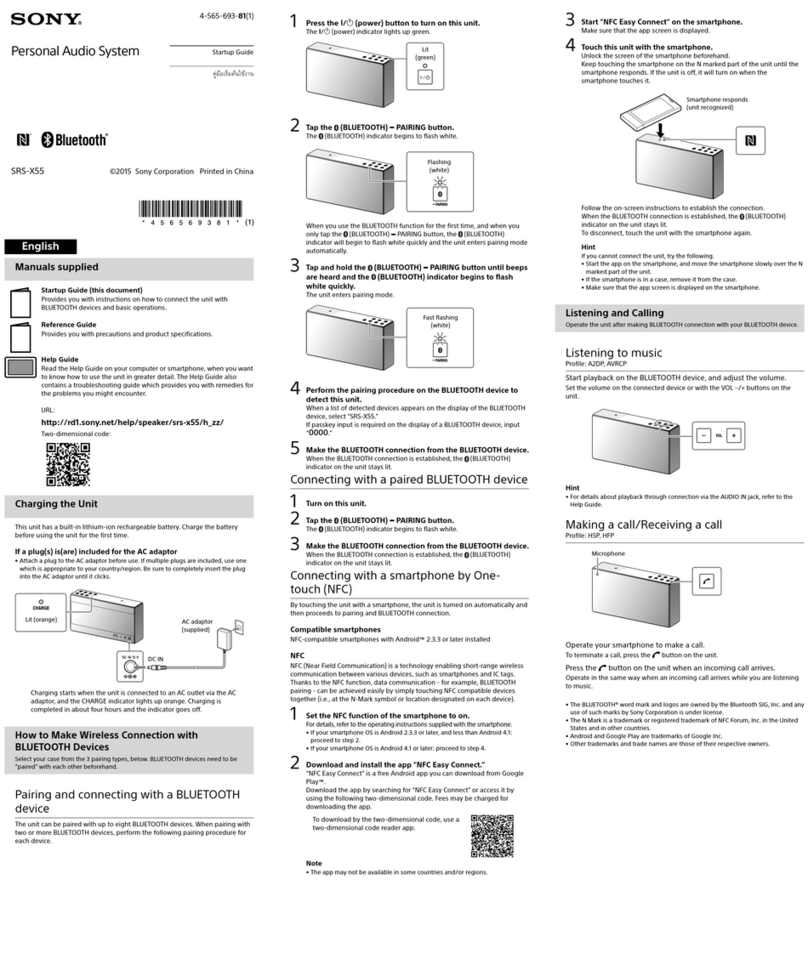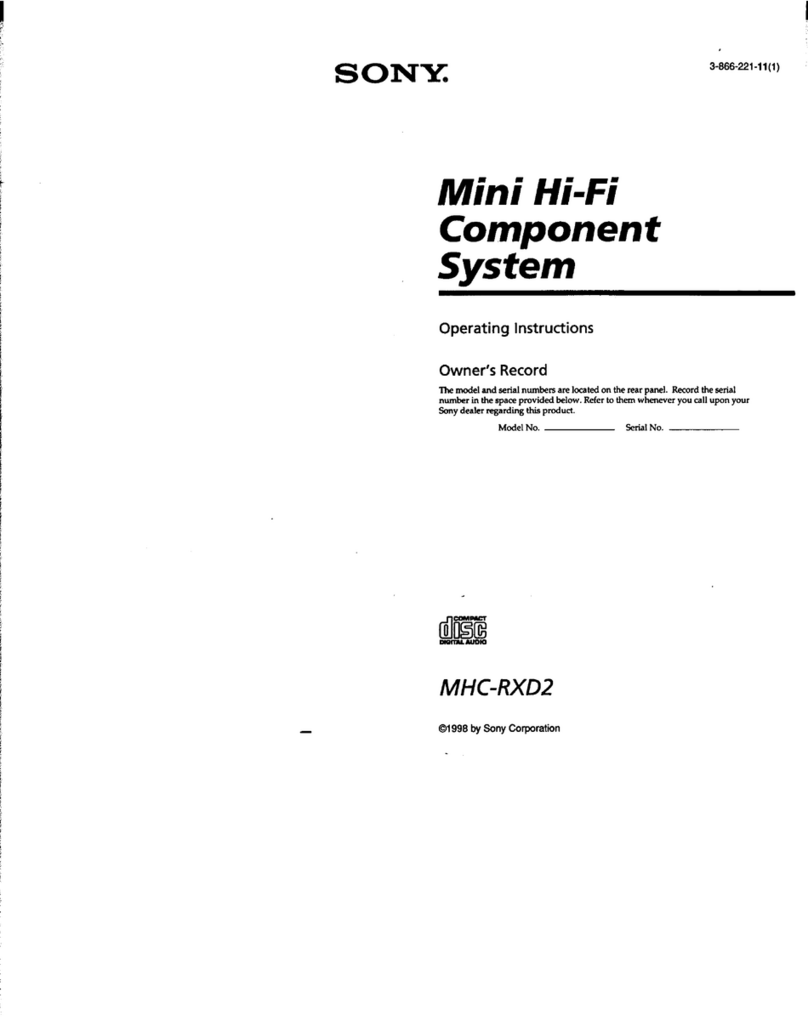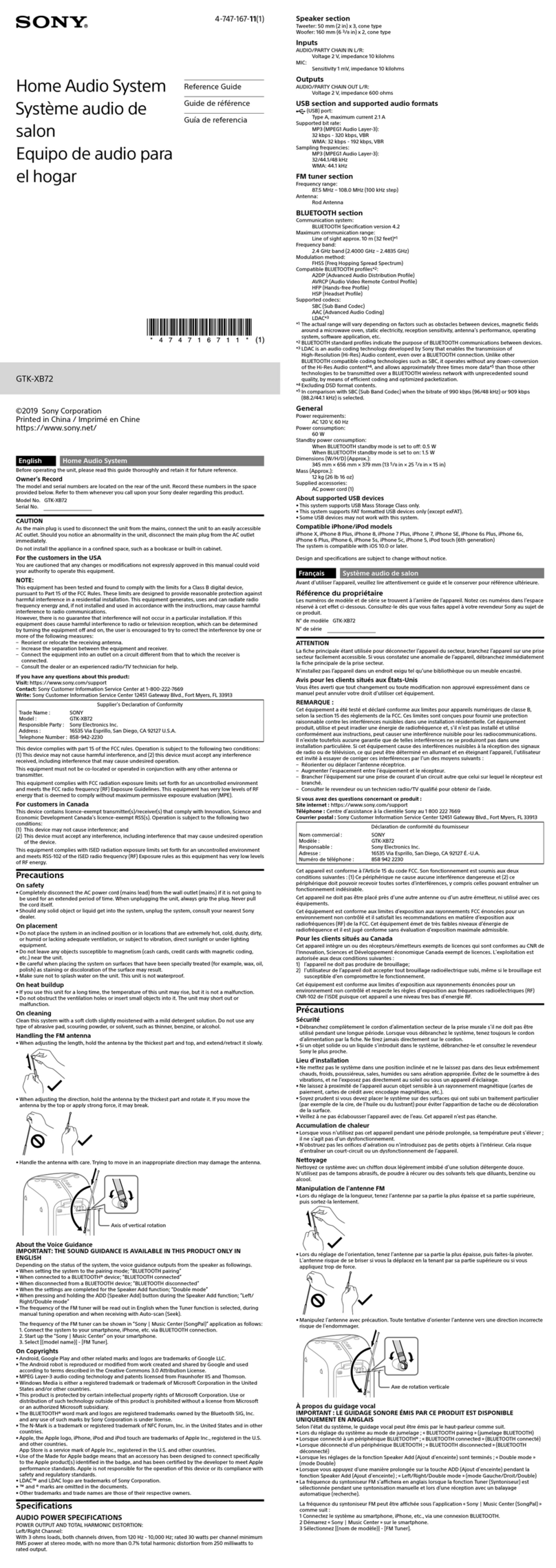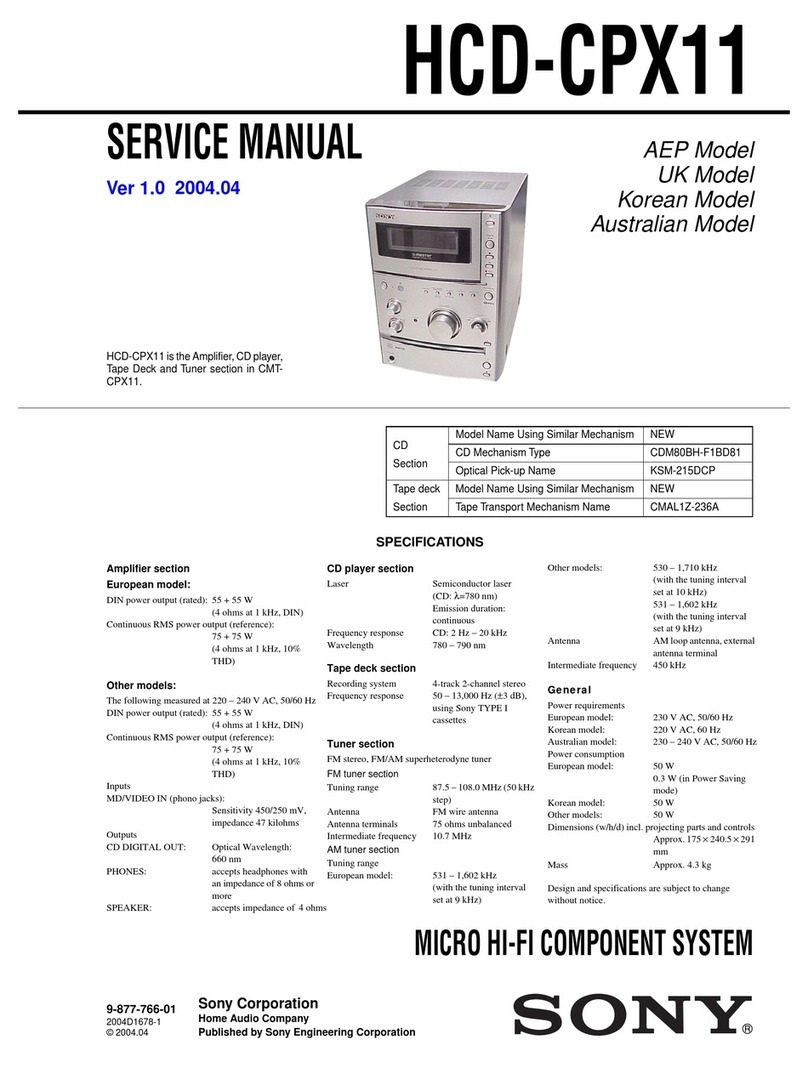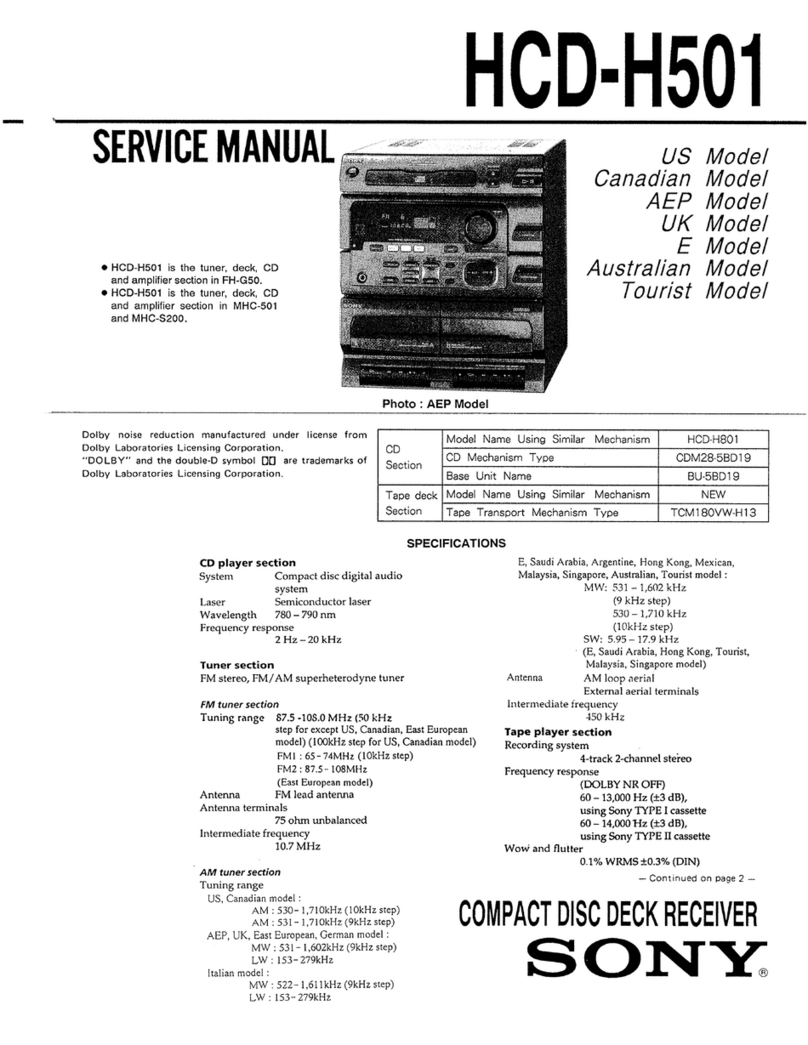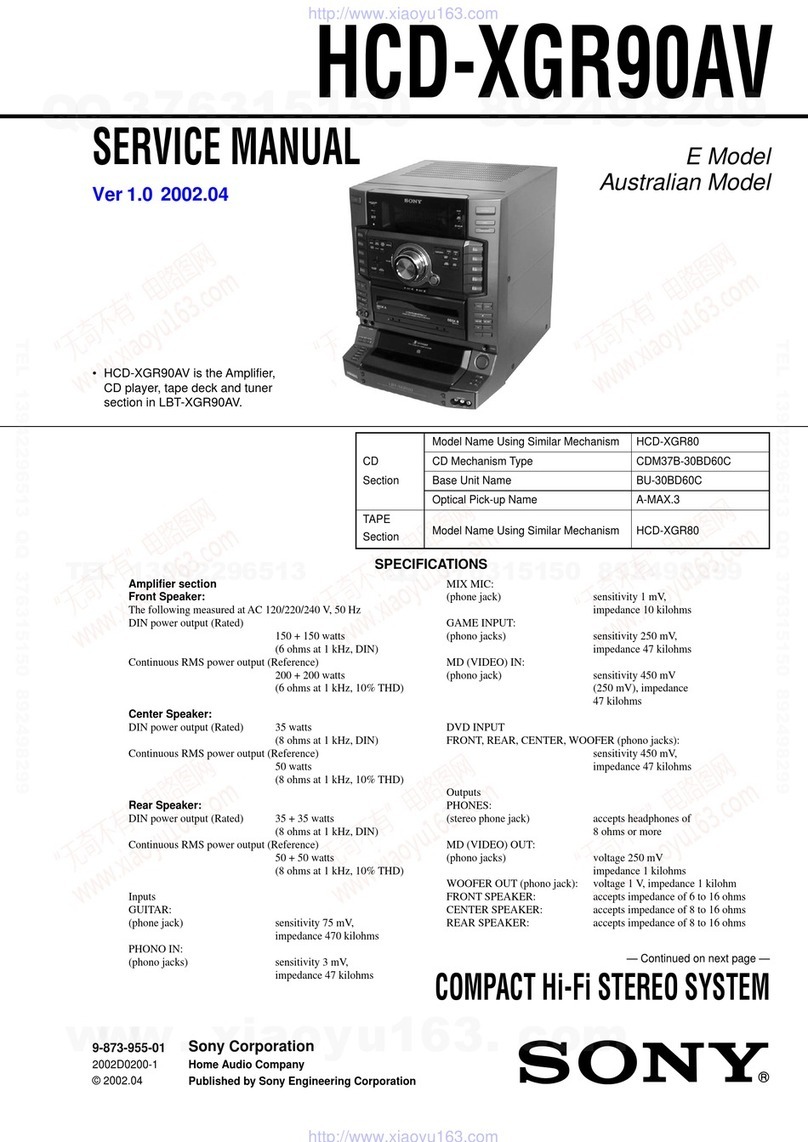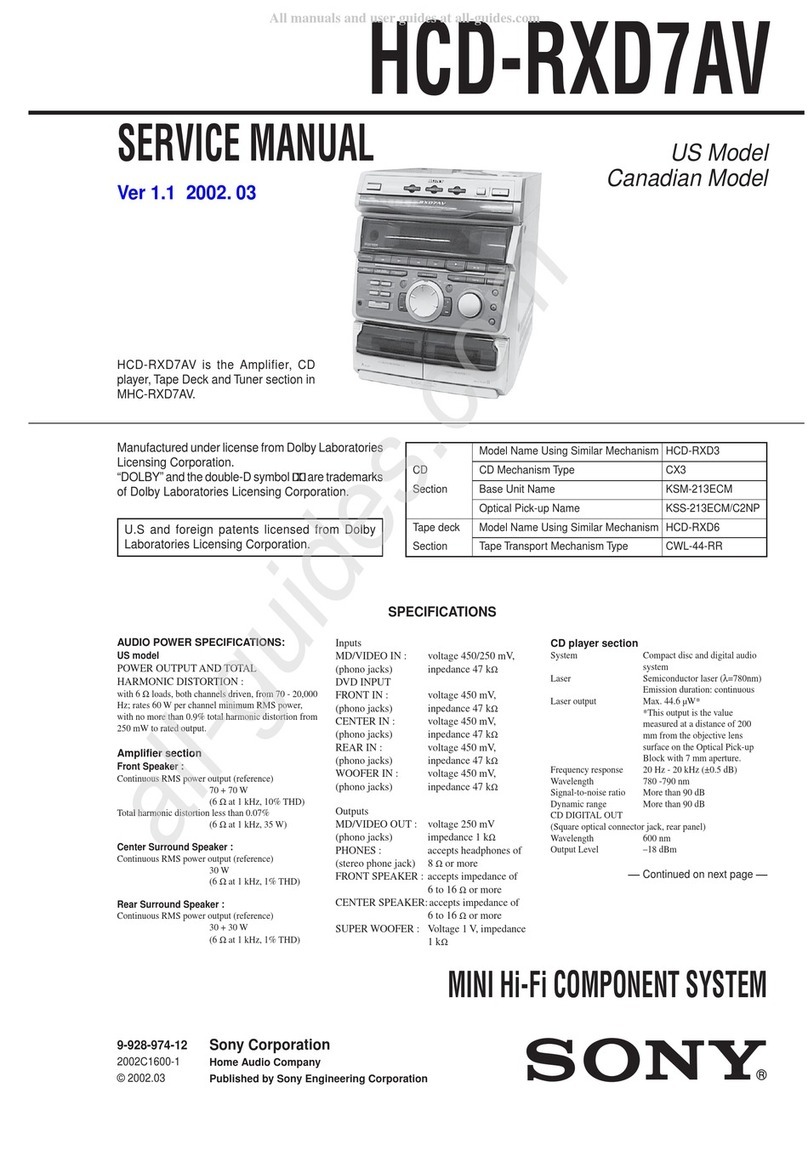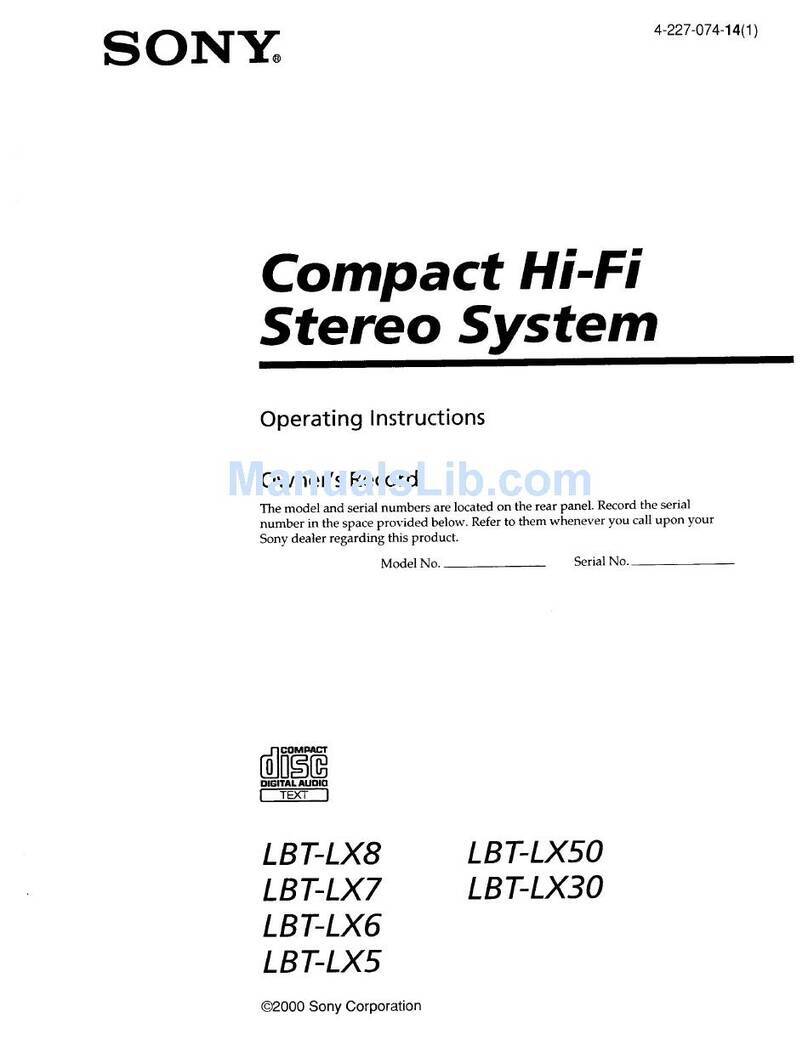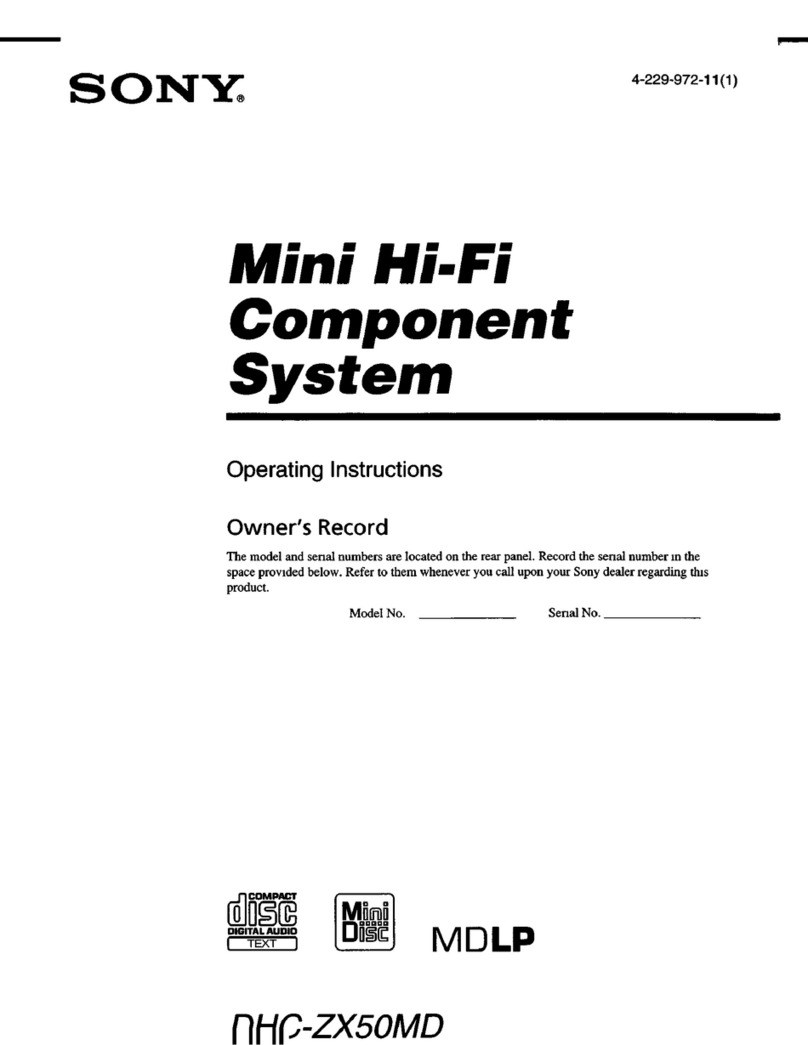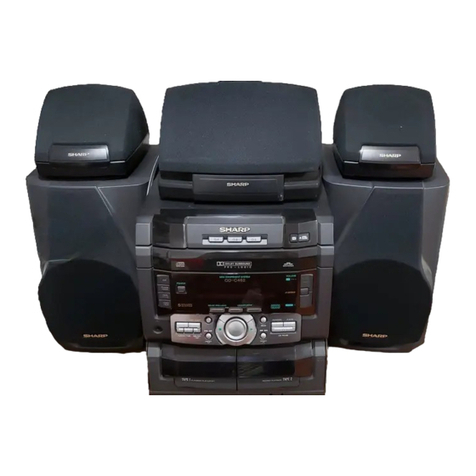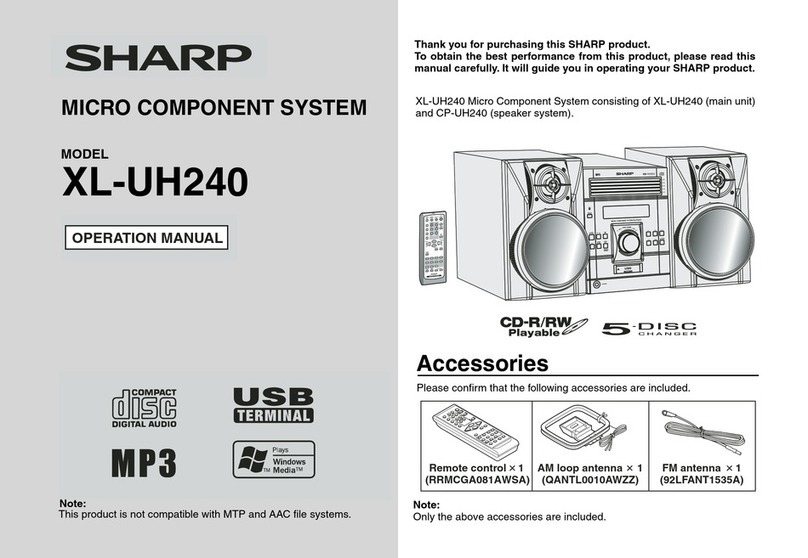
3
HCD-DX80
MODEL IDENTIFICATION
— BACK PANEL —
MODEL
BR, E2, E51, SP, AR models
MX model
PARTS No.
4-231-580-4s
4-231-580-5s
• Abbreviation
AR : Argentina model
BR : Brazilian model
E2 : 120 V AC Area in E model
E51 : Chilean and Peruvian model
SP : Singapore model
MX : Mexican model
PARTS No.
TABLE OF CONTENTS
1. GENERAL ................................................................... 4
2. DISASSEMBLY ......................................................... 7
2-1. Disassembly Flow ........................................................... 7
2-2. Case (Top) ....................................................................... 8
2-3. Loading Panel.................................................................. 8
2-4. CD Mechanism Deck (CDM58E-30BD60) ................... 9
2-5. Front Panel Section ......................................................... 9
2-6. Tape Mechanism Deck (TCM-230AWR41)................... 10
2-7. Back Panel Section.......................................................... 10
2-8. Main Board...................................................................... 11
2-9. LEAF SW Board, HEAD (A) Board,
HEAD (B) Board ............................................................ 11
2-10. Base Unit (BU-30BD60) ................................................ 12
2-11. DRIVER Board, MOTOR Board, SENSOR Board ....... 12
3. TEST MODE ............................................................... 13
4. MECHANICAL ADJUSTMENTS ........................ 15
5. ELECTRICAL ADJUSTMENTS.......................... 15
6. DIAGRAMS
6-1. Block Diagram –TUNER/CD Section –......................... 21
6-2. Block Diagram –MAIN Section – .................................. 22
6-3. Note for Printed Wiring Boards and
Schematic Diagrams ....................................................... 23
6-4. Schematic Diagram –BD Board – .................................. 24
6-5. Printed Wiring Board –BD Board – ............................... 25
6-6. Schematic Diagram –MAIN Board (1/4) – .................... 26
6-7. Schematic Diagram –MAIN Board (2/4) – .................... 27
6-8. Schematic Diagram –MAIN(3/4)/HEAD Board –......... 28
6-9. Schematic Diagram –MAIN Board (4/4) – .................... 29
6-10. Printed Wiring Board –MAIN Board – .......................... 30
6-11. Schematic Diagram
–POWERAMP/SENSOR Board – ................................. 32
6-12. Printed Wiring Boards
–POWERAMP/SENSOR Board – ................................. 33
6-13. Schematic Diagram
–PANEL/VIDEO SWITCH Board – .............................. 34
6-14. Printed Wiring Boards
–PANEL/VIDEO SWITCH Board – .............................. 35
6-15. Schematic Diagram
–CD SWITCH/PAD SWITCH Board – ......................... 36
6-16. Printed Wiring Boards
–CD SWITCH/PAD SWITCH Board – ......................... 37
6-17. Schematic Diagram –LEAF SW Board – ....................... 38
6-18. Printed Wiring Boards –LEAF SW/HEAD Board – ...... 39
6-19. Schematic Diagram
–ADDRESS SENSOR/DRIVER/MOTOR Board – ...... 40
6-20. Printed Wiring Boards
–ADDRESS SENSOR/DRIVER/5MOTOR Board – .... 41
6-21. Schematic Diagram
–MAIN TRANS/SUB TRANS Board – ........................ 42
6-22. Printed Wiring Boards
–MAIN TRANS/SUB TRANS Board –......................... 43
6-23. IC Pin Function Description ........................................... 47
7. EXPLODEDVIEWS
7-1. Cabinet Section ............................................................... 52
7-2. Front Panel Section ......................................................... 53
7-3. Main Board Section ........................................................ 54
7-4. CD Mechanism Deck Section (CDM58E-30BD60) ...... 55
7-5. Base Unit Section (BU-30BD60) ................................... 56
7-6. Tape Mechanism Deck Section-1 (TCM-230AWR41).... 57
7-7. Tape Mechanism Deck Section-2 (TCM-230AWR41).... 58
8. ELECTRICAL PARTS LIST.................................. 59
